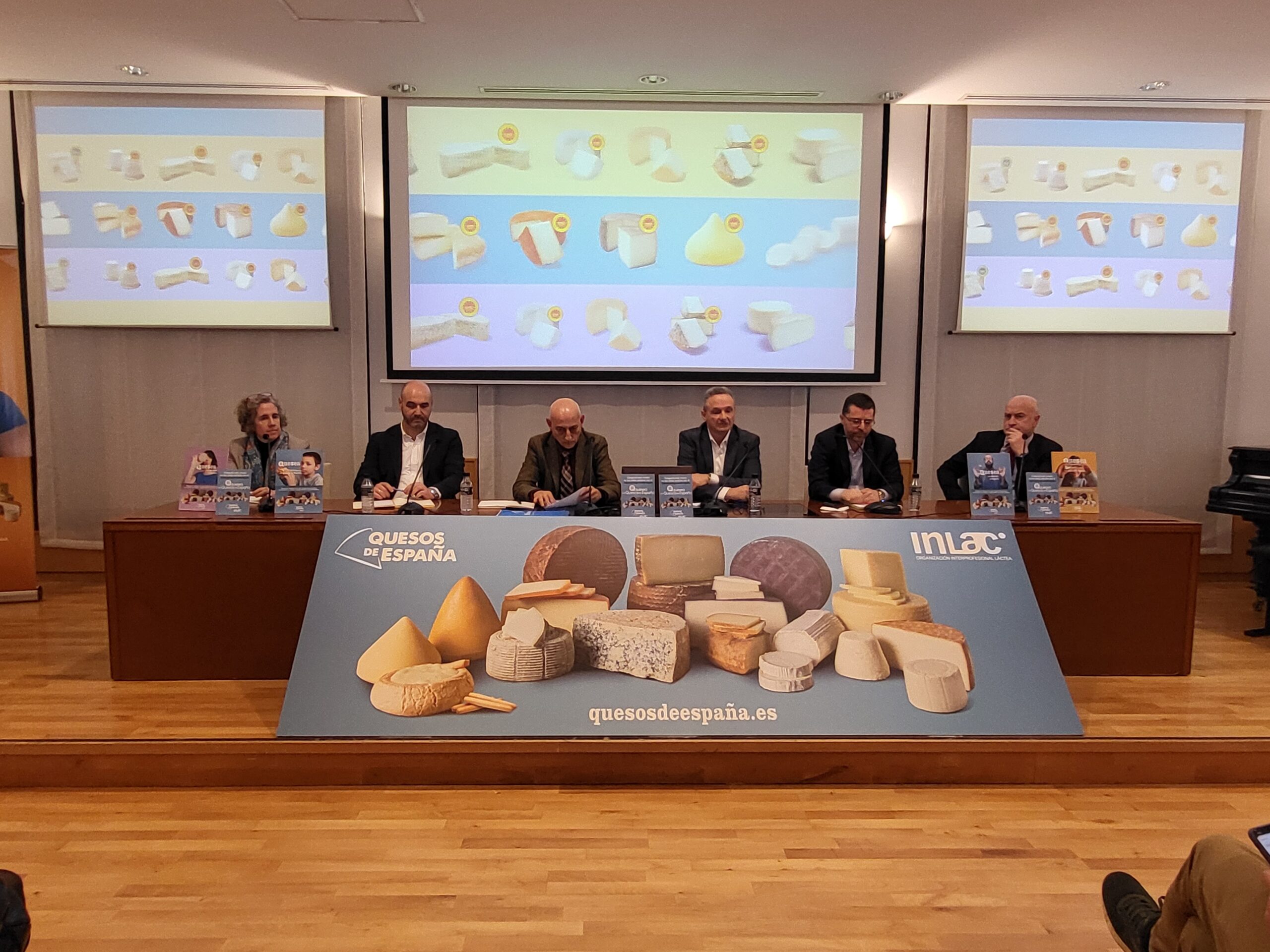
ZEULAB, InLac and CSIC present in Madrid the first revolutionary method to quantify the milk of different species contained in blended cheeses.
13 Dec 2023The Interprofessional Dairy Organisation (InLac), Zeulab and the National Biotechnology Centre of the Spanish National Research Council (CSIC) have presented today in Madrid the results of the ambitious R&D&I project that has allowed the development of a technique for quantifying milk from different species in mixed cheeses that can be applied by analysis laboratories.
The method is revolutionary, given that the techniques available until now were of a detection nature, allowing only the absence or presence of cow’s, sheep’s or goat’s milk to be determined, but without being able to precisely quantify the percentage of each of them.
Inlac has promoted this innovative R&D&I project with the support of Zeulab, the National Biotechnology Centre of the CSIC, Laboratorios Arroyo, the companies Queserías Entrepinares, Grupo Lactalis, Central Quesera Montesinos, Reny Picot, Grupo TGT and MAPA. During today’s presentation, a first opening session was attended by the managing director of InLac, Nuria María Arribas; the deputy director of the National Biotechnology Centre, Ana Cuenda and the deputy director general of Quality Control and Agri-Food Laboratories of the MAPA, Javier Maté Caballero. Meanwhile, the presentation of the method for quantifying milk from different species in mixed cheeses was given by the director of Zeulab, Pedro Razquin, and his team. Finally, José Carrión (Central Quesera Montesinos), Óscar Esteban (Queserías Entrepinares), Ignacio Bernáez (Lactalis Group), Gema Barceló (TGT Group) and Manuel Viaño (Reny Picot) took part in a round table discussion.
“This PRM targeted proteomics technique has a high specificity, high sensitivity, a wide dynamic range of detection and is independent of the maturity stage of the cheese sample”, explained Zeulab’s director, Pedro Razquin.
As a result, “it is able to determine, in terms of protein, the amount of milk of each species in the cheese samples. The results of the validation, carried out in accordance with the guidelines of the Association of Official Analytical Collaboration (AOAC), demonstrated the performance, robustness and reliability of the method for the analysis of Iberian-type cheeses,” added Razquin.
Currently, the method is being consolidated by analysing other types of cheeses and a larger number of commercial Iberian-type cheeses. “Cheeses made from a mixture of milk from different species are mainly produced in Mediterranean countries such as Spain, and many of them are protected by designations of origin or geographical indications. In fact, 40% of the cheese produced in our country is a blend,” explained InLac’s managing director, Nuria María Arribas, during her speech. In the future, manufacturers will have a powerful weapon,” she said, “to be able to certify blended cheeses and enhance their value and prestige in national and international markets.
The analytical technique used is a targeted proteomics method called PRM (Parallel Reaction Monitoring) and employs liquid chromatography coupled to Orbitrap mass spectrometry equipment (LC-Q-Orbitrap-MS/MS).
This technique makes it possible to identify and quantify the abundance, either relative or absolute, of proteins present in a complex sample by selectively monitoring fragments of these proteins or peptides. When these peptides are protein and/or species specific, they are called proteotypic and can be considered the “fingerprint” of the milk of each species used. Therefore, their detection certifies the presence of the milk corresponding to each of the species in the composition of the blended cheese analysed. It is a technique with high specificity, high sensitivity and a high dynamic range of detection. Moreover, it is independent of the state of the sample, being able to work with denatured proteins.
Translated with DeepL.com



